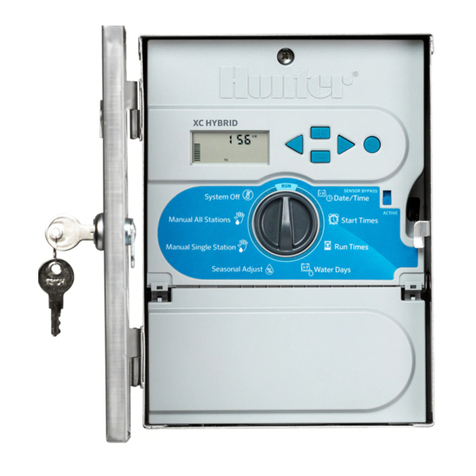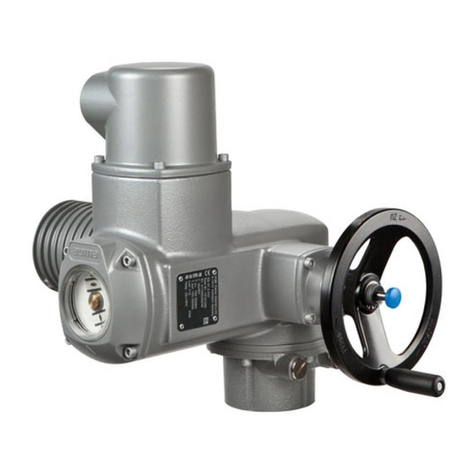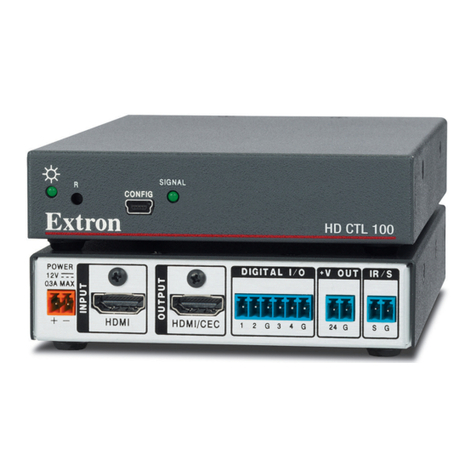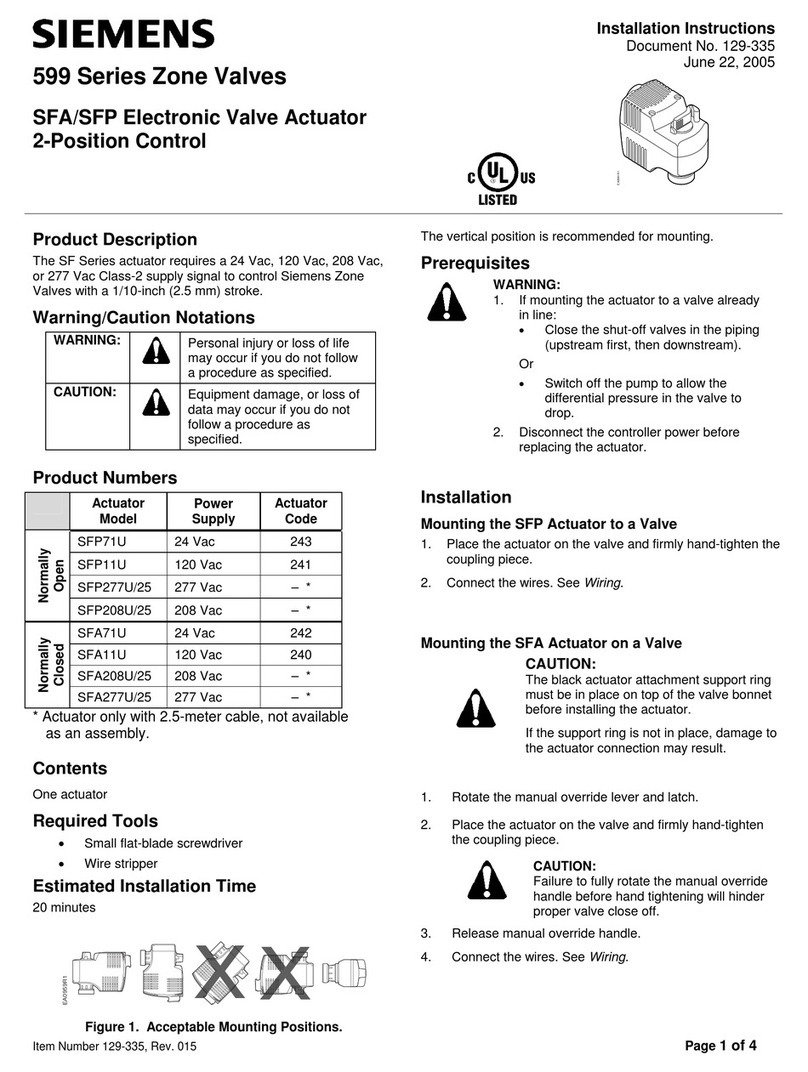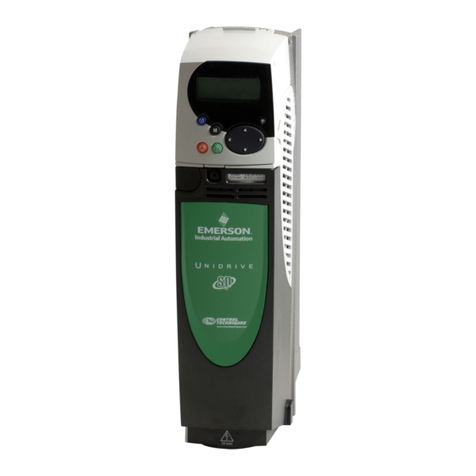ELT iLC CORE Series User manual

USER GUIDE
Fully PROGRAMMABLE control gear for LED modules
GU-001/10/19-EN
ORC<5%

www.elt.es
2
1. INTRODUCTION 4
1.1. Benets of the technology................................................................................................... 4
1.2. Classication and symbols................................................................................................... 4
1.3. General features of the drivers ............................................................................................. 4
1.4. Portfolio ................................................................................................................................. 5
2. ELECTRICAL FEATURES 6
2.1. Electrical parameters ............................................................................................................ 6
2.2. Electrical insulation ............................................................................................................... 7
3. THERMAL CHARACTERISTICS AND LIFETIME 8
3.1. Temperature inside the casing (tc) ...................................................................................... 8
3.2. Ambient temperature (ta)...................................................................................................... 8
3.3. Lifetime .................................................................................................................................. 8
4. PROTECTION 9
4.1. Short circuit protection ......................................................................................................... 9
4.2. Overload and open circuit protection ................................................................................... 9
4.3. Thermal protection ................................................................................................................ 9
4.4. Out-of-range mains voltage protection .............................................................................. 10
4.5. Shock wave protection........................................................................................................ 10
5. FUNCTIONALITIES 11
5.1. Adjustable output current (AOC) ........................................................................................ 11
5.3. LED module constant lumen output (CLO) ........................................................................ 12
6. DIMMING METHODS 13
6.1. 1-10V mode.......................................................................................................................... 14
6.2. ActiDIM mode...................................................................................................................... 15
6.3. ON/OFF mode...................................................................................................................... 15

3
www.elt.es
7. INSTALLATION 16
7.1. General observations .......................................................................................................... 16
7.2. Installation in luminaires..................................................................................................... 16
7.3. Connecting the drivers ........................................................................................................ 16
7.4. Protective switches............................................................................................................. 18
8. ELECTROMAGNETIC COMPATIBILITY 20
9. MECHANICAL FEATURES 21
10. DRIVER CONFIGURATION 22
10.1. iSOFT.................................................................................................................................. 22
10.2. USB connection cable ....................................................................................................... 22
10.3. Quick start guide ............................................................................................................... 23
10.4. Factory default conguration............................................................................................ 24
11. MARKINGS AND INDICATIONS 25
12. APPLICABLE STANDARDS 26
13. PRODUCT WARRANTY 27
14. DISCLAIMER 28

www.elt.es
4
1. INTRODUCTION
Thank you for choosing control gear for LED modules designed and manufactured by ELT (Especialidades
Luminotécnicas S.A.U.). This user guide will help you learn about iLC CORE driver technology and congure your
control gear so that it can be correctly integrated into your luminaire.
We advise you to check the latest available version of this document on the ELT website, www.elt.es/en.
1.1. Benets of the technology
The iLC CORE series is a cost-efcient solution that incorporates multiple dimming modes and programmable
functionalities. Given its extensive window of operation, long service life and resilience, the iLC CORE series joins
the family introduced by our iLC PRO series, enabling you to choose the ideal lighting solution for every light point.
1.2. Classication and symbols
The nomenclature of the iLC CORE control gear, taking an example the iLC 58C/350…700-XR, is described as follows:
▪iLC: Constant current control gear equipped with programmable technology.
▪58: Maximum output power.
▪C: Symbol for the iLC CORE family.
▪350…700: Constant current output in milliamps in which regulation is permitted.
▪XR: Casing format.
1.3. General features of the drivers
The main features of the iLC CORE control gear are:
▪Build-to-use drivers with insulation double or reinforced insulation. IP20 ingress protection.
▪Suitable for installation in Class I and Class II luminaires.
▪Wide range of input voltages.
▪High power factor.
▪Low harmonic distortion.
▪Low output ripple current.
▪High quality light without flickering.
▪Programmable by modulating output current size.
▪Wide range of output current regulation.
▪Congurable functionalities for an optimal lighting system design:
- Adjustable output current (AOC).
- LED module constant lumen output (CLO).
▪Different regulation methods can be selected, adapting each lighting point to the needs of the installation:
- 1-10V.
- ActiDIM: stand-alone and dynamic dimming system that adapts to night hours.
- ON/OFF: no regulation.

5
www.elt.es
▪Short circuit (from power-on), overload and open circuit protection.
▪Control gear thermal protection.
▪Protection against grid variations and power surges.
▪Electronic circuit fully protected against humidity.
▪Excellent thermal performance and extensive working temperature ranges.
▪Up to 100,000h lifetime.
1.4. Portfolio
Ref nº Model
9916176 iLC 58C/350…700-XR

www.elt.es
6
2. ELECTRICAL FEATURES
2.1. Electrical parameters
The iLC CORE control gear has a very extensive operating area, perfectly adjusting the operating point required in the
design of each luminaire and each lighting system. The result is full flexibility, easily adapting to the continuous and
fast evolution being experienced by LED technology lighting.
The operating area of the drivers is dened by the maximum and minimum load voltage that can be connected, by the
maximum and minimum output current that can be programmed and by the maximum working power.
The operating point is dened by the maximum voltage of the LED module to be connected and the current which it
is going to supply. This operating point must be within the operating area of the selected driver.
In terms of efciency, the power factor, THD and dimming range of the iLC CORE drivers are positioned in the high
performance segment of the lighting sector.
NOTE:
The technical specications of each model and their corresponding data sheets can be viewed and are available for download via
the ELT website at www.elt.es/en
Vout (V)
Iout (mA)
Operating area
Vout max
Vout min
Iout min Iout max
Maximum driver output
Operating point
(V module, I module)

7
www.elt.es
2.2. Electrical insulation
The iLC CORE control gear has been designed in accordance with the EN 61347-1 and EN 61347-2-13 safety standards
for double or reinforced insulation against electric shocks resulting from contact with accessible parts.
The insulation between the primary and secondary circuits, as well as between every circuit and the functional earth,
is set out in the following table:
Mains 1-10V Functional
earth LED module Accessible
parts
Mains XBasic Double Double Double
1-10V Basic XDouble Double Double
Functional earth Double Double XDouble Double
LED module Double Double Double XDouble
Accessible parts Double Double Double Double X
NOTE:
When the devices are built into luminaires, the cabling between the different components must observe the insulation class for
which these lighting xtures have been designed, as well as comply with the EN 60598 standard.

www.elt.es
8
3. THERMAL CHARACTERISTICS AND LIFETIME
The thermal operating conditions of the control gear are a critical factor for its lifetime and for the LED street lighting
system into which it is integrated. This is why an understanding of the factors and parameters relating to this aspect
is essential.
The iLC CORE control gear has been designed to offer maximum performance with the best thermal efciency.
Once the drivers have been integrated into the lighting system, the thermal efciency and lifetime depend on factors
such as the connected load, luminaire design, its capacity to dissipate the heat generated inside the unit and the
relative position of each of its components.
3.1. Temperature inside the casing (tc)
The parameter to control in order to ensure correct operation and life expectancy is the temperature inside the casing
at a point called tc. The tc is a point of reference that represents the conditions under which the driver’s internal
components are working. Particular care must be taken to ensure that the maximum limits specied for each model
are not exceeded.
The simplest way to measure the temperature at this point is by means of a thermocouple attached at the place
indicated on the casing of each driver once thermal stability has been achieved.
3.2. Ambient temperature (ta)
The iLC CORE drivers have been designed to be able to operate within a very wide ambient temperature range. The
maximum ambient temperature limit depends on the operating point, the value of the connected load and, largely, to the
design of the luminaire itself and its ability to dissipate heat outwards.
The maximum permitted ambient temperature for control gear can serve as a guideline or an indicator of the
conditions under which that device is able to work, however must not be used as the control parameter to guarantee
its estimated lifetime.
3.3. Lifetime
The iLC CORE control gear can achieve up to a 100,000 hour lifetime depending on the working temperature at point
tc.
NOTE:
Thermal data and the lifetime of each model can be viewed on their corresponding data sheets, available for download via the ELT
website at www.elt.es/en

9
www.elt.es
4. PROTECTION
The iLC CORE drivers are equipped with internal protection to ensure that the they and every component of the
luminaire in which they are installed operate correctly.
4.1. Short circuit protection
In the case of a short circuit in the load terminals, the driver goes into hiccup mode (power-on retries), in which it
remains as long as the fault continues. This protection resets automatically, so that when the short circuit event is
resolved, the driver comes out of protection mode and the power supply restarts.
4.2. Overload and open circuit protection
In the event of overload, the driver goes into protection mode, where it remains for a specic time depending on the
severity of the overload. The protection mode maintains a constant output, making it impossible to perform any type
of programming while it is in this mode. When the overload exceeds 150V, the driver goes into hiccup mode, where
it will remain as long as the fault continues.
In the event of an open circuit, the driver goes into hiccup mode, where it will remain as long as the fault continues.
If it is connected at a load lower than that permitted in the operating area, the driver will supply a current of 70mA as
long as this situation is maintained.
4.3. Thermal protection
The iLC CORE control gear benets from thermal protection so that the power supplied is reduced when a temperature
excess is detected.
If, under normal operating conditions, the temperature at tc exceeds its maximum permitted value by 6ºC, the driver
will reduce the power supplied by up to 75% of the total.
If, during power reduction mode, the temperature at tc continues to rise until it exceeds its maximum permitted value
by 8ºC, the driver will reduce the load by up to 10% of the total.
While in either of the 2 power reduction modes, if the temperature at tc drops 6ºC lower than its maximum permitted
value, the driver will return to its initial normal operating mode.
This process is illustrated in the flowchart on the following page:

www.elt.es
10
4.4. Out-of-range mains voltage protection
The iLC CORE control gear is designed to withstand temporary fluctuations in mains voltage that are outside the
permitted range.
In the event of a low mains voltage value that is between the permitted minimum and the brownout value, the driver
will remain on. If this situation continues over time resulting in over-heating, the driver will reduce the power supplied
to the load and even disconnect it in extreme cases.
In the event that a mains voltage value is less than the brownout value, the driver switches itself off for protection.
In the event that a mains voltage is above the maximum permitted value, the driver will remain on, generating stress
on its internal components and potentially affecting its lifetime. Possible adverse effects are increased the greater
the value and the longer the time that the power surge continues.
Even though the drivers are able to withstand power surges of 380Vac for 2 hours, extreme care must be taken to
avoid this type of situation.
4.5. Shock wave protection
The iLC CORE drivers are designed to offer improved protection of the supply terminals against shock waves such
as those caused by radio storms. They benet from levels of protection, in both differential and common modes, that
are higher than the minimums dened by the immunity requirements for lighting equipment under EN 61547.
▪Protection in differential mode (L - N): 6kV / 3kA
▪Protection in common mode (L - Earth / N - Earth): 8kV
If higher levels of protection are required, external devices can be added to the luminaire or to another point in the
street lighting installation.
NOTE:
Fault conditions and the response of each model can be viewed on their corresponding data sheets, available for download via the
ELT website at www.elt.es/en
Normal operating
75% power reduction
NO
NO
YES
YES
NO
YES YES
tc > tc max. +6º
tc < tc max. -6º tc < tc max. -6º
tc > tc max. +8º
Power on
10% power reduction

11
www.elt.es
5. FUNCTIONALITIES
5.1. Adjustable output current (AOC)
The adjustable output current (AOC) is a feature that congures the nominal value of the output current from a driver.
The output current value selected is understood to be the nominal value used to achieve 100% of the light level in any
of the selected dimming modes that can be programmed within the entire permitted range.

www.elt.es
12
5.2. LED module constant lumen output (CLO)
This feature allows a gradual increase curve of the output current over time to be dened for the constant lumen
output depreciation of the LED module.
To correctly use and congure this functionality, the depreciation curve of the LED module lumen output to be
supplied must be known. This curve can differ for the different LED modules on the market and depends on both the
operating point and the thermal conditions under which it is working.
Based on this information, a table can be dened to incrementally assign an output current value for each operating
interval, so that the loss of LED module lumen output during that period is compensated.
The output current value can be assigned in increments of 1% within a range from 0 to 100%, where 100% is the value
dened by the AOC. The intervals can be congured in steps of 500 hours.

13
www.elt.es
6. DIMMING METHODS
The iLC CORE control gear is able to select the most suitable dimming method for each application. The choice of
a specic dimming mode activates its conguration parameters and deactivates other dimming methods.
Dimming is achieved through the amplitude modulation (AM) of the output current, obtaining flicker-free light at each
regulation point
The main features of each method are explained below.

www.elt.es
14
6.1. 1-10V mode
This dimming system is able to vary the light flow by means of an analogue control signal that reaches the drivers
via an additional two-wire control line, whose positive and negative polarity must be observed when making the
connection.
This one-way system, in which the control information only flows from the controller towards the control gear, is not
addressable, given that every device connected by cable to the control line reacts to a set point.
The analogue control signal is a continuous voltage level within a range from 1V to 10V. This signal can be obtained
directly from an active control device (analogue control cards or power supply sources) or indirectly from a passive
control device (variable resistance or potentiometer) through which the output current generated by the devices in
their control terminals circulates.
To ensure that these active control devices work correctly, they must have the capacity to absorb a quantity of
current greater than that generated by all the connected devices together.
Where a potentiometer is used for regulation, this device must have the resistance value indicated in the electric input
parameters of the driver. When various devices are going to be connected to the same potentiometer, the following
formula has to be applied to calculate its resistance value, adequately sizing it in terms of the power to dissipate.
The ratio of the resistance value of the potentiometer compared to the control voltage level and the light regulation
level generated is not linear, which means that logarithmic control potentiometers can be used to improve the
dimming experience.
The use of active control elements that generate the analogue 1-10V signal is the recommended option over the use
of passive elements such as a potentiometer in cases where stricter control is required over the regulation point or
where the device is expected to work in extreme temperature ranges.
In 1-10V dimming, the maximum dimming level is obtained by leaving the control terminals in open circuit or with
a signal equal to 10V. This is the 100% level and cannot be congured. The minimum level, however, is obtained by
short-circuiting the control terminals or via a signal lower than or equal to 1V.
NOTE:
Drivers from different manufacturers may produce different responses to the same control signal value.
No of devices to control x Maximum output current of the 1-10V control terminals
Potentiometer value = 560 k Ω
nº devices in parallel

15
www.elt.es
6.3. ActiDIM mode
The ActiDIM operating mode is a stand-alone dimming system that simulates astronomical behaviour to provide
energy saving without the need to wire in a control line.
The automatic dimming algorithm controls the times at which a change of light level has to take place. It takes as a
reference the average night time duration point, calculated based on the average of the last three nights. The duration
of each night is dened as the time measured from when the street lighting is switched on to the time it is switched
off.
NOTE:
When the lighting is switched on for less than 4 hours (for example, to carry out maintenance tasks or during power outages) and in
cases where it is on for more than 20 hours, the control gear does not memorise that period as a ‘night’ and therefore does not take
it into account when applying the ActiDIM calculation algorithm.
This system is able to congure different dimming proles, selecting up to maximum of 9 levels, their value, the
duration of the transitions and the changes between them.
6.8. ON/OFF mode
The driver can be congured in ON/OFF mode where no type of regulation is required.
If the user congures the driver with an output current below 350mA by means of the AOC functionality, the driver will
enter ON/OFF mode by default and no type of regulation will be allowed.

www.elt.es
16
7. INSTALLATION
7.1. General observations
The constant current power supply drivers for LED modules use sensitive electronic components. They have to be
handled and manipulated with care, as with any other electronic equipment.
The installation, maintenance and replacement of the drivers must be carried out by qualied personnel, strictly
in line with the given instructions for the product and current regulations, in order to achieve the correct level of
durability and operation for both the driver and the LED module it supplies.
To guarantee protection against electric shocks during any intervention involving the driver, the power supply must
be disconnected
7.2. Installation in luminaires
The iLC CORE control gear, classied as “build-to-use” drivers, must be installed inside the luminaire or in other
housings that guarantee protection from environmental conditions such as humidity, water, snow, ice and dust. ELT
recommends the use of luminaires with a minimum protection rating of IP54, however depending on the application,
higher protection levels may be necessary.
The luminaires, as well as the entire street lighting system, must provide adequate protection against electric shocks.
The iLC CORE control gear is categorised as equipment with “double and reinforced” insulation and is suitable for
installation in both Class I and Class II luminaires.
Insofar as it is possible, they must be installed away from heat sources and be tted to maximise heat dissipation.
7.3. Connecting the drivers
To ensure that the iLC CORE drivers are correctly connected and work properly, the following instructions must be
taken into account:
▪ Do not exceed the permitted ranges for the electrical input and output values for the different connection terminals
of the drivers.
▪The polarity indicated on the labelling must be observed at all times.
▪ DC operation is only allowed for equipment that has been specically designed for the purpose.
▪ In three-phase 400V installations, ensure that the neutral is always connected. If this connection is broken, the
400V could reach the equipment, with the consequent risk of a breakdown. During installation, the distribution of
loads between phases must be balanced out as much as possible.
▪ The stripped length and cable section indicated on the equipment labelling must be respected for each connection
terminal.
▪ As regards the output terminals, the equipment should be installed as close as possible to the LED module. In any
event, for correct operation, the maximum accepted distance between the driver and the LED module is 2 metres.
▪ The connection cables must be appropriately insulated for the working voltage and comply with the level of
protection against electric shocks provided by the street lighting system.
▪ To avoid damaging the driver connectors, press the connector drive carefully when inserting or removing a cable.

17
www.elt.es
▪Ensure that the chassis and other internal metal parts, such as assembly plates, supports or dissipaters, are always
connected or electrically isolated. Make a reliable electrical connection between them by using serrated washers
and sufciently tightened screws, ensuring that the connecting cables are as short as possible to minimise
inductances and thereby maximise their efcacy.
▪ In Class I luminaires, the protective earth conductor is strictly compulsory. Connect the protective earth to the
chassis and to the internal metal parts.
▪In Class II luminaires, ELT recommends installing an equipotential connection or a star conguration functional
earth conductor between the chassis and every inaccessible conductive element of the lighting xture, to avoid
issues with electromagnetic compatibility and to provide protection against shock waves.
▪ The installation of a switch at the driver output is not allowed as this could damage the LED modules as well as
the driver itself.
R
L
N
DRIVER
LED MODULE
R
L
N
LED MODULE
N
LED
CONFIG.
L
LED
MODULES

www.elt.es
18
7.4. Protective switches
Each group of drivers has to be protected by an automatic circuit breaker and, in Class I installations, by a single-
circuit trip switch.
The iLC CORE drivers are resistant to temporary power surges as specied in the regulations and must be installed
in independent circuits separated from other inductive loads such as inductive ballasts, motors, etc
Automatic circuit breaker
The moment the control gear is connected, the driver’s condensers create a high pulse of current that lasts for a very
short period. This is called the inrush current.
The simultaneous ignition of several drivers can activate the protective automatic circuit breakers, which is why
depending on the type and features of each, ELT recommends the installation of a maximum number of drivers.
The inrush current values and the maximum number of drivers that can be connected to each automatic circuit
breaker can vary depending on the nominal voltage and impedance of the grid to which they are going to be installed.
These values, which can be viewed on the specic data sheets for each reference, have been empirically obtained
using the set-up and measurement method proposed under the draft standard IEC 63129, for a 277V AC reference
power grid as dened under NEMA standard 410 of 240Vac with a line impedance of 450mΩ and 100 H.
The inrush current values of the control gear will reduce, thereby increasing the number of drivers to be connected to
each circuit breaker; the lower the voltage, the greater the impedance of the power grid (and vice versa). As such ELT
recommends that it is checked for each installation.
Steps can be taken to reduce the effects of the inrush current, such as the use of external devices to limit it; carrying
out a sequential ignition of the control gear; dividing the installation into different circuits; or selecting automatic
circuit breakers with a less sensitive response curve.
NOTES:
The maximum number of drivers that can be connected to an automatic circuit breaker will be the most restrictive value that is
obtained from the evaluation of the inrush current and the maximum connected load.
50 % Ipeak
Ipeak
Width
(A)
(μs)

19
www.elt.es
Single-circuit trip switch
The interference suppression lters of the LED control gear is designed to earth interferences in the form of leakage
current, whose typical value is less than 0.5mA in iLC CORE drivers.
The total leakage current of the luminaire can be greater because of the current introduced by elements such as the
LED module or the cabling.
This leakage current has to be taken into account in Class I installations so that the protective single-circuit trip
switches can be appropriately sized.
In three-phase modules, leakage currents are compensated by balancing the distribution of the luminaires’
connection between the three phases, while for single-phase networks, the maximum number of luminaires that can
be connected to each switch has to be calculated.
NOTES:
▪ Typically a maximum of 35 luminaires can be connected in a 30mA residential single-circuit trip switch. As this maximum
number can vary depending on the installation , ELT recommends that this is checked.
▪The functional earth terminal may not be disconnected from the driver to reduce the leakage current value.

www.elt.es
20
8. ELECTROMAGNETIC COMPATIBILITY
The control gear manufactured by ELT is designed in accordance with the EN 55015 standard on Electromagnetic
Compatibility.
To guarantee compliance with this regulation, the following recommendations should be followed:
▪Adjust the length of the cables between the LED module and the control gear to the minimum distance possible
between connections.
▪The connection wires to the LED module must run together, avoiding the creation of loops.
▪The power cables, control cables and the connection to the LED module must be physically separated and never
crossed.
▪Running a cable over or sticking it to the control gear is not recommended.
▪ ELT recommends that the functional earth of every metallic component of the luminaire is connected to the
protective earth in Class I luminaires, even though this connection is not designed to protect from electric shocks.
The iLC CORE control gear is of a “build-to-use” type. This means that the tests corresponding to standard EN 55015
have taken place on a benchmark luminaire using the driver, the LED module and the dissipater xed to a metal
mounting plate with a 20-cm long connecting cable between them. Respecting this benchmark assembly, the above-
described recommendations and the indications contained in standard EN 55015, ELT guarantees test compliance.
Table of contents
Popular Controllers manuals by other brands
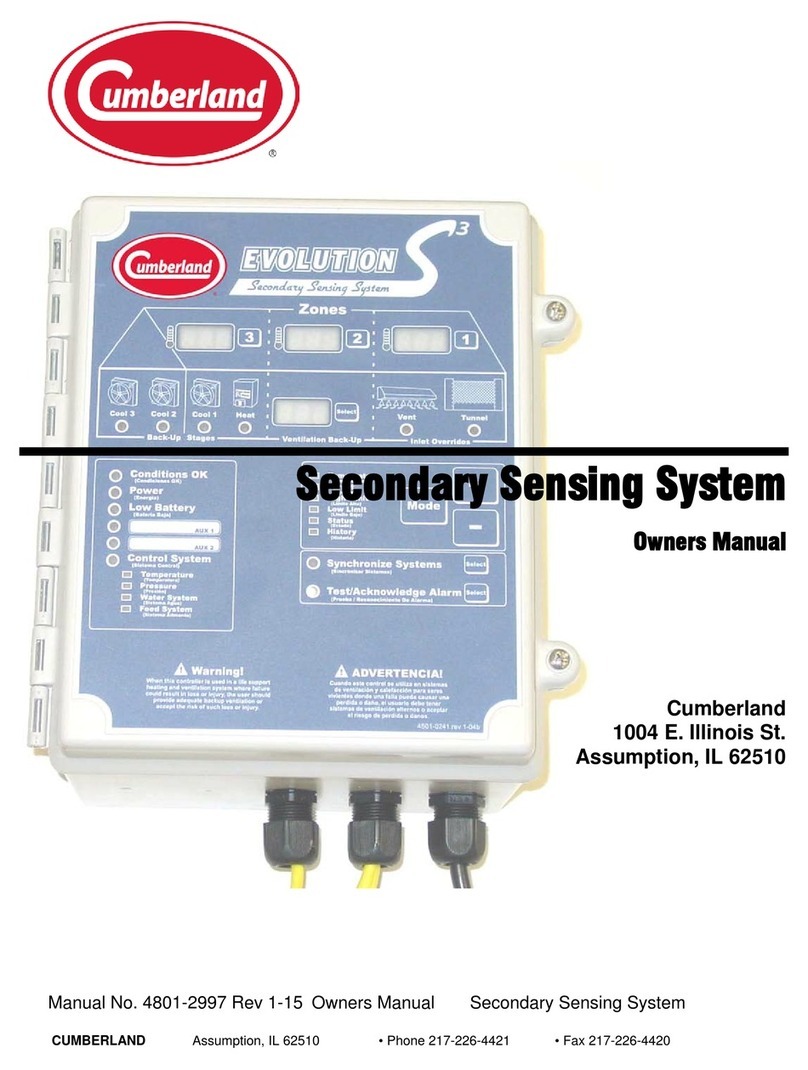
Cumberland
Cumberland Evolution S3 owner's manual
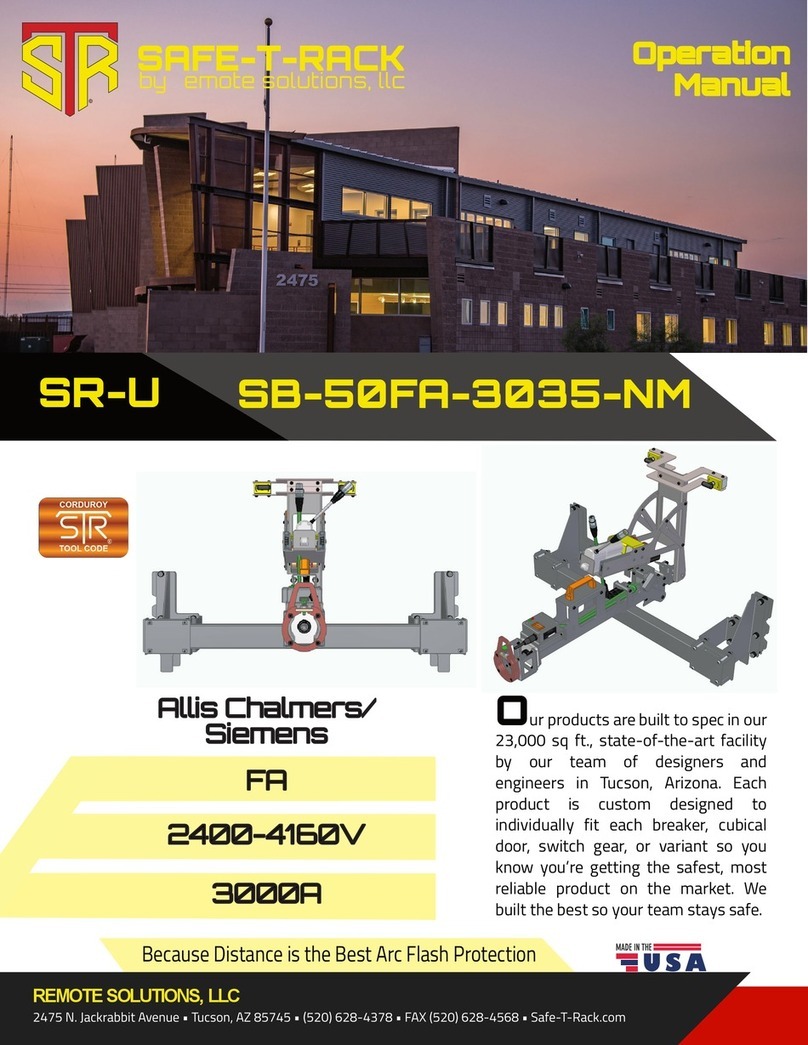
Remote Solutions
Remote Solutions SAFE-T-RACK SR-U Operation manual
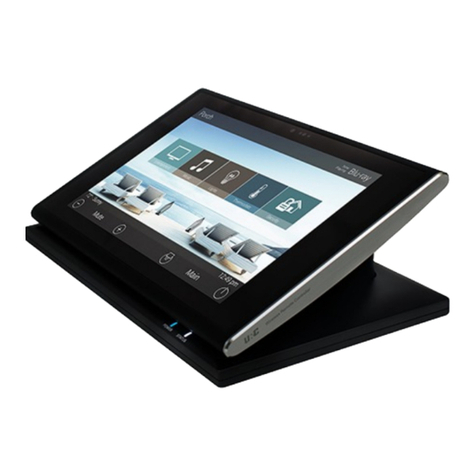
URC
URC Total Control 2.0 TDC-9100 owner's manual
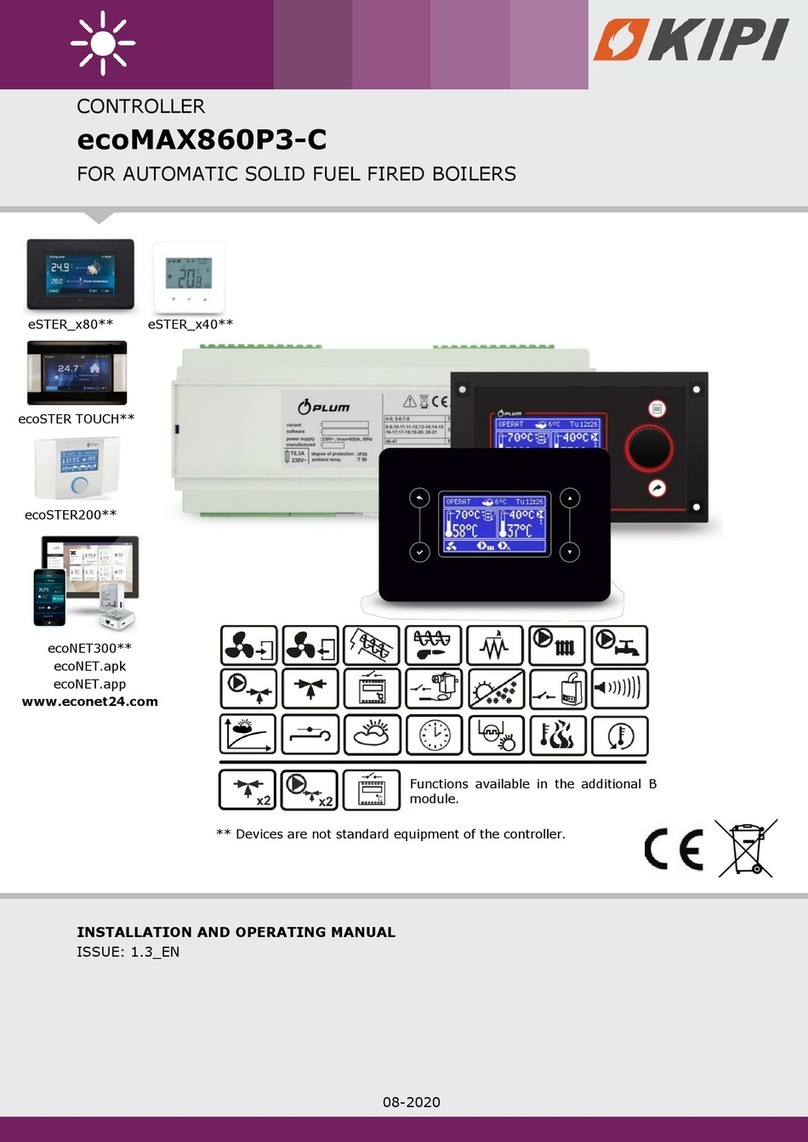
KIPI
KIPI ecoMAX860P3-C Installation and operating manual
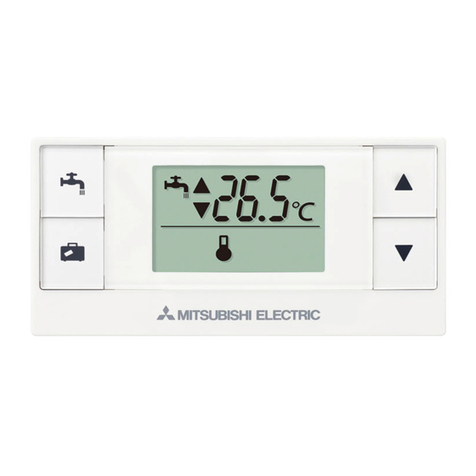
Mitsubishi Electric
Mitsubishi Electric Ecodan PAR-WT50R-E Operation manuals
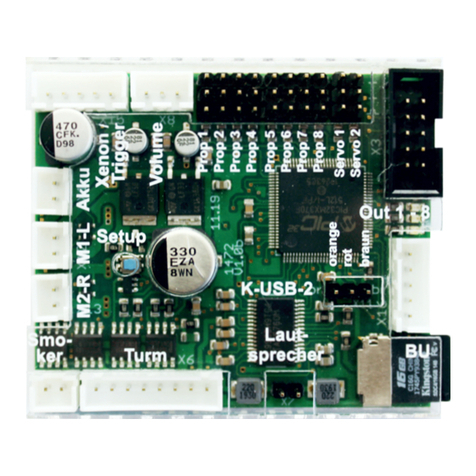
BEIER-Electronic
BEIER-Electronic SFR-1-HL operating manual
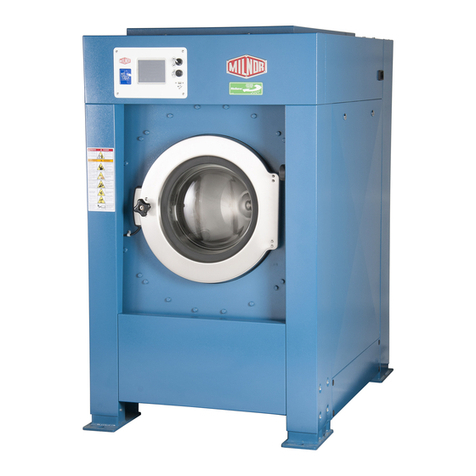
Milnor
Milnor MilTouch MWF27Z8 Series Operator's guide
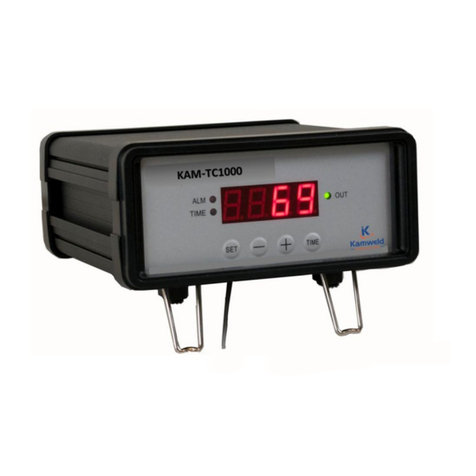
KAMWELD
KAMWELD KAM-TC1000 Operation & instruction manual
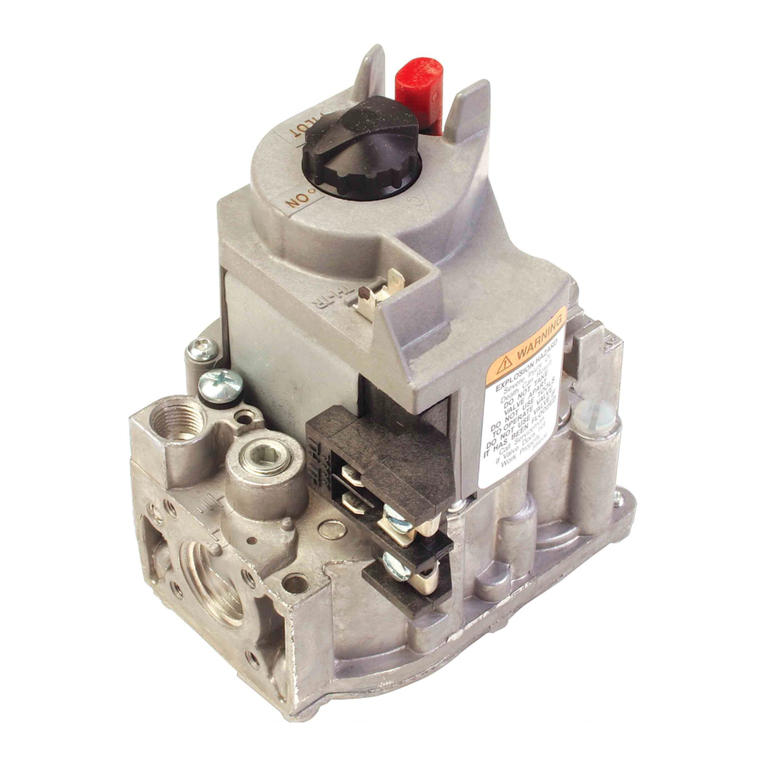
resideo
resideo VR8200A installation instructions
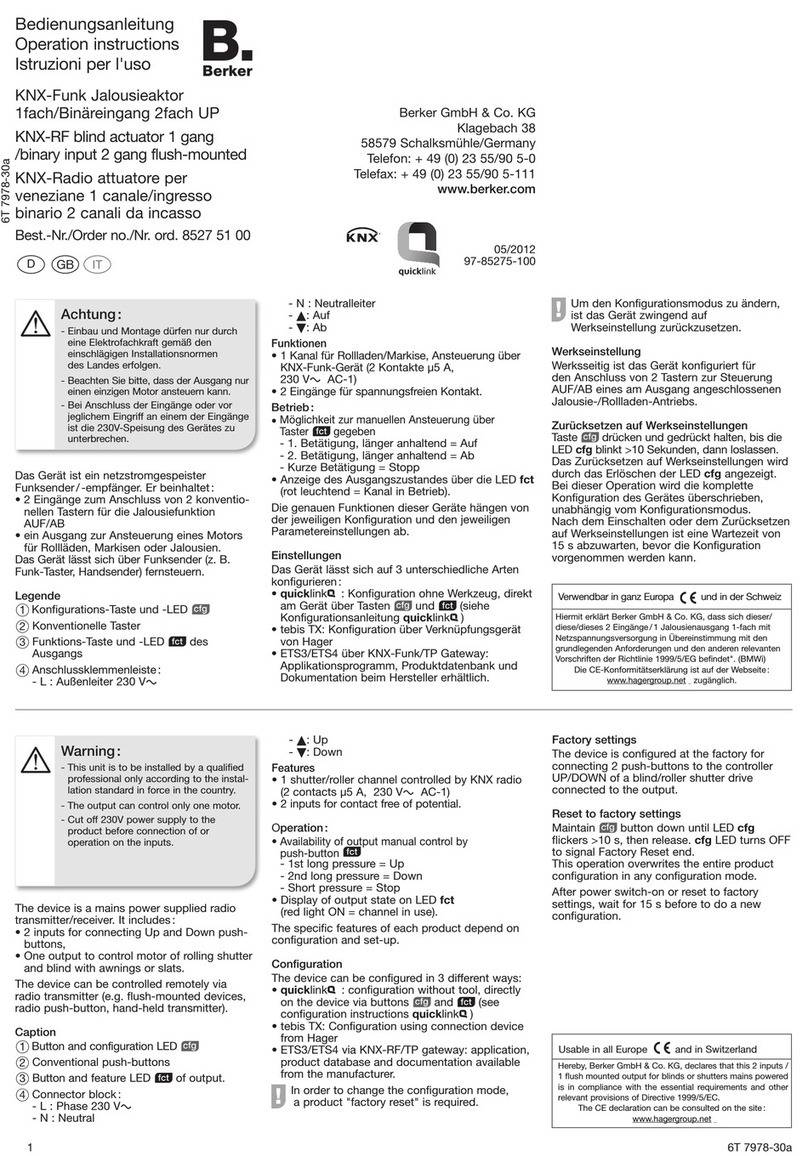
Berker
Berker KNX-RF Operation instructions

industrie technik
industrie technik SE25M24 instructions

Rockford Fosgate
Rockford Fosgate PMX-RGB manual
